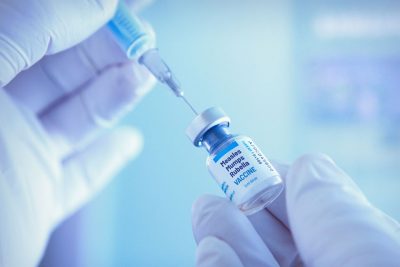By Stan Deresinski, MD, FIDSA
Synopsis: The Centers for Disease Control and Prevention has updated measles vaccination recommendations.
Source: Centers for Disease Control and Prevention. Emergency Preparedness and Response. Expanding measles outbreak in the United States and guidance for the upcoming travel season. March 7, 2025. https://www.cdc.gov/han/2025/han00522.html
The outbreak of measles in Texas and New Mexico, as well as scattered cases in other states, has raised issues about recommendations for measles vaccination in the current environment. The risk of widespread measles in the United States is low because of the high level of immunity to the virus resulting from natural infection (in those born before 1957) and vaccination. However, a lack of immunity in individuals is associated with a very high risk of infection with even minimal exposure — breathing the same air — to individuals with measles. As a consequence, the question of the indications for vaccination in adults has been raised.
This essay is limited to vaccination in adults. The Centers for Disease Control and Prevention (CDC) now recommends that adults who are not at high risk of exposure to the virus have at least one documented dose of the measles, mumps, rubella (MMR) vaccine at some point in their life or have some other evidence of immunity (i.e., positive measles immunoglobulin G [IgG] antibody). In contrast, those who are at high risk of exposure should have two documented doses. This excludes receipt of only inactivated vaccine, which was used from 1963-1967. The CDC notes that the Advisory Committee on Immunization Practices (ACIP) also recommends revaccinating anyone who received measles vaccine of unknown type or a further attenuated measles vaccine accompanied by immunoglobulin or high-titer measles immune globulin (no longer available in the United States) with one or two doses during those years.
Individuals considered to be at high risk should receive two doses of MMR given at least 28 days apart. This includes students at colleges or other post-high school educational institutions who do not have presumptive evidence of immunity, international travelers, and healthcare personnel. Although birth before 1957 generally is accepted as evidence of immunity as a consequence of having been naturally infected in childhood, healthcare personnel who lack laboratory confirmation of having been infected or IgG antibody to the virus are candidates for vaccination.
The CDC also recommends that, unless they have presumptive evidence of immunity to measles, family members and other close contacts of individuals with compromised immune systems receive two doses of vaccine separated by 28 days. This vaccination regimen also is indicated for measles nonimmune individuals aged older than 5 years with relatively preserved immune systems: CD4 percentage > 15% and CD4 count ≥ 200 lymphocytes/mm3 for ≥ 6 months. This limitation is related to concern about the use of a live virus vaccine in severely immunocompromised individuals. In addressing at-risk adults in outbreak situations, the CDC states that in addition to routine recommendations, health departments may endorse a second dose for adults residing in the affected areas. In addition to the routine recommendations for MMR vaccine, health departments may recommend a second dose for adults or an earlier second dose for children 1 to 4 years of age who are residing in or visiting the affected areas.
Stan Deresinski, MD, FACP, FIDSA, is Clinical Professor of Medicine, Stanford University.

